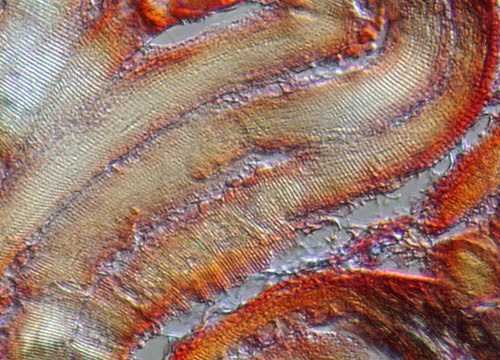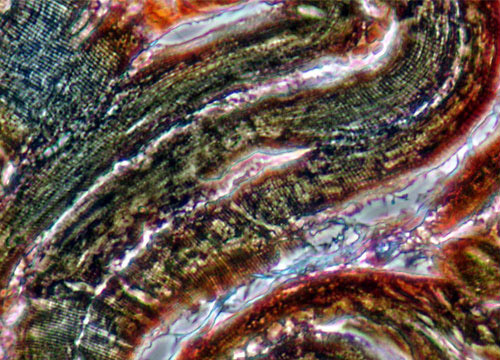Tooth Stained Thin Section
On land, the mammal with the most teeth is the giant armadillo, which can have as many 100 teeth in its mouth. In water, the long-snouted spinner dolphin exceeds that number, possessing as many as 252 teeth in its long thin jaws. Humans have comparatively few, producing only 20 primary teeth and 32 permanent ones.
 DIC
DIC
 Phase
Phase
Phase
All true teeth have certain characteristics in common and are composed of three layers. The innermost section of a tooth is the pulp, which consists of small blood vessels, cells, and a nerve. The pulp nourishes the dentine that is similar in composition to bone and comprises the bulk of each tooth. Enamel (illustrated above), the hardest substance of the body, covers the dentine of the tooth's crown. Due to the enamel, the teeth of mammals are the part most often fossilized and since the number, size, organization and shape of the teeth are different in every species, they are extremely useful for taxonomy.
DIC
Mammalian teeth have evolved into different forms because they are used for different purposes. Elephant tusks, which can be used for defense and for lifting, are actually modified incisors and are the largest teeth in the world. The lower incisors of pigs are close together and projected forward so that they can be used as a tool for digging. Baboons feature enlarged canine teeth that are utilized for defense and display. However, the sawfish may be the most unusually adapted since it is the only animal with true teeth outside its mouth. Members of the species utilize the teeth on the sides of their snouts to lacerate prey.













